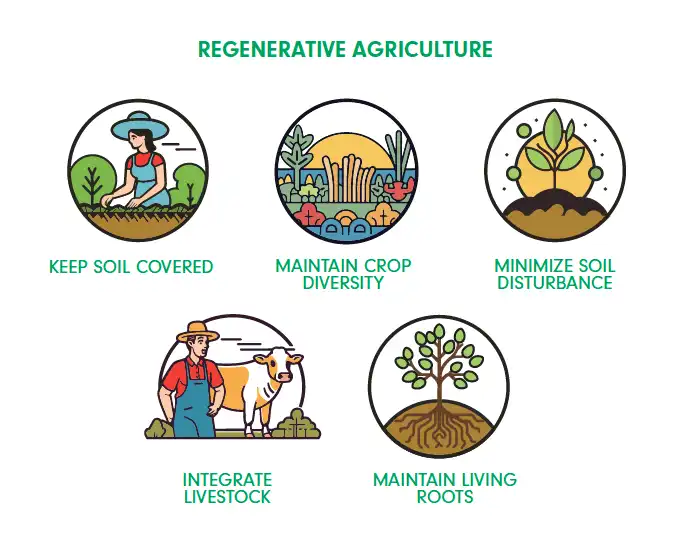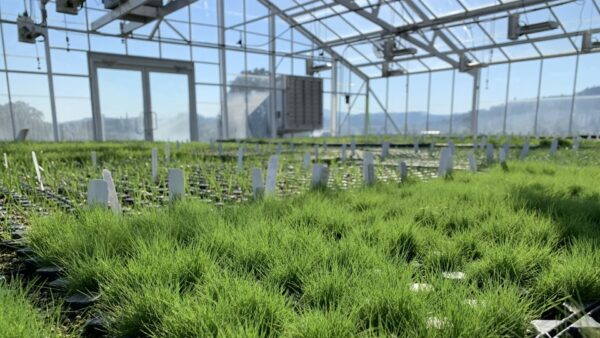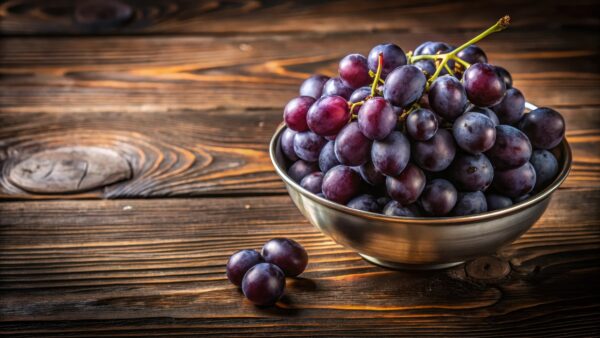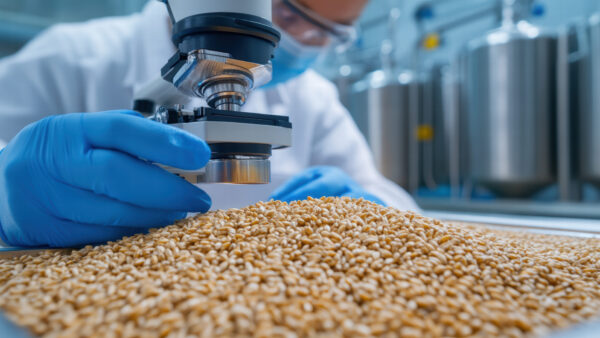
Editor’s Note: This article is the second part in our 2024 feature about Regen Ag.
A closer look at regenerative agriculture and its benefits to farmers.
WHY IT MATTERS
There’s been a lot of buzz about regenerative agriculture in recent years, with multinational companies such as PepsiCo, Unilever, General Mills and many others all pledging to work hard to establish regenerative agriculture practices in their supply chains.
In Part 1 of this series, we looked at what regenerative agriculture is, what the companies are doing towards regenerative agriculture, and how they make sure their practices are a good fit with the intended region. Here in Part 2, we look at some examples of regenerative agricultural practices that the companies have implemented and whether these practices can provide the same yield as in conventional agriculture.
As in Part 1, we collected replies from experts of six European seed companies: Guy Montet, Forage & Cover Crops Technical Development Manager at Lidea; Bruno Hoeltgebaum, Business Director at Incotec; Jason Allerding, Global Head, Sustainability, Health, Safety and Risk Management at Syngenta Seeds; Martin van der Voort, Sales & Marketing Director at Bejo Zaden; Maria Stenull and Lorenzo Carmagnola, Global and European Sustainability Managers, respectively, at BASF; Valentina Manstretta, Horta EU research projects Lead; Imke Hering, Lead Value Offer Development and Markus Molthan, Portfolio Manager Catch Crops at KWS.
SWE: Can you give some examples of the progress you have made towards regenerative agriculture?
Hering indicates that feed rations in livestock farming have a role to play in reducing CO2 emissions in agriculture. With a share of about 60 per cent in CO2 emissions, feeding plays quite a substantial role in pork production. Due to its resource-efficient properties, hybrid rye can make a significant contribution to avoiding emissions. A sustainability study concluded that modern KWS hybrid rye varieties produce about 20 per cent less CO2 per ton of crop than, for example, wheat, which is otherwise used in pig feed. “Whilst maintaining a great yield performance, hybrid rye needs less water than other types of cereal and requires significantly less fertilizer and pesticide since it generally exhibits good plant health,” Hering says.

The annual CO2 emissions in pig feeding could be reduced by around 20 to 30 per cent up until slaughter by using a regional, hybrid rye-based feed that also contains a proportion of regionally sourced proteins, such as rapeseed meal.
“These are the results of a study on the “6-R Concept ” with our company as an industrial partner. Apart from the emission reduction aspect, accompanying practical studies on the 6-R Concept also show the positive effects of rye-rich feeding on animal health.
“We expect certification of the resulting sustainable feeding concept this year,” she adds.
“For cotton, we have established a partnership with the University of Thessaly (UTH) in 2021 to explore the potential for upscaling our Certified Sustainable FiberMax® (CSF) program, by introducing novel regenerative practices and delivering certified European non-GMO regenerative cotton (CSF+),” says Carmagnola. A triple-scale consortium was established (three farmers, BASF, and UTH scientific team) with the scope to qualify novel farming practices, transfer know-how, and support farmers in the initial transition to regenerative farming.
The regenerative practices performed followed the principles of Conservation Agriculture which are minimum soil disturbance through no-till and direct sowing, crop diversification with appropriate rotations, and permanent soil cover with natural vegetation and cover crops. “Smart farming and precision agriculture techniques through variable rate fertilization and spraying and justified irrigation, scheduled through actual soil water information, were also implemented,” Carmagnola adds.
An important example for Montet is the continuous improvement of their genetics by their breeders. Criteria such as initial vigour, speed of establishment and leaf cover, and a host of other physiological characteristics suited to regenerative cultivation techniques are carefully observed and selected. “This can result in varieties that adapt well to a multi-crop association, which can be used for our sowing under cover and companion plant solutions, for example,” Montet says.
Another example is the development of cover crops that attract beneficial organisms, increasing their populations by a factor of 4, 5, or even 7, and of cover crops with a high potential for additional carbon storage, increasing sequestration by a factor of 2 or 3.

“We have made some incredible strides recently in alliances that further demonstrate our regenerative agriculture commitment to farmers and the planet,” says Allerding.
For example, we entered into a partnership with the Potato Sustainability Alliance to enhance on-farm sustainability reporting for potato growers. And together with CNH Industrial, we are connecting digital applications to better serve farmers. And there are many other examples.”
Hoeltgebaum indicates that his company already has several products in its portfolio which are free of microplastics. “We’re pioneers in promoting it, with the first commercial launch for corn and sunflower in 2020. Currently, we have a broad offering of microplastic-free solutions,” he says. His company is commercializing new-generation microplastic-free film coats both in Europe as well as in Brazil. “Besides that, we are developing seed treatment products that will optimize the performance of actives, additives, and biologicals on seeds.”
“Our company has developed catch crops for decades and even intensified its activities in the past years,” says Molthan. Under the Fit4NEXT label, the company offers its own catch crop mixtures worldwide that can be optimally integrated into existing crop rotations. The newly launched, digital ‘Fit4NEXT Field-Check’ tool now also makes the performance and potential of catch crops visible and measurable. “It provides farmers with concrete figures for the parameters nitrogen and carbon as well as for humus formation and CO2 fixation for the first time,” Molthan adds.
“Horta, a business unit in BASF, that has digital tools that trace and show regenerative sustainability impacts, has participated in two projects funded by the European Commission: AGRESTIC and PLOUTOS,” says Manstretta. The AGRESTIC project promotes innovative cropping systems to mitigate climate change and enhance the efficiency and sustainability of agriculture. The project compared conventional cropping systems with more efficient ones in three locations in Italy, incorporating practices such as cover crops, legumes in rotation, optimization of inputs, and feasibility studies on Payment Ecosystem Services (PES). The project outcomes demonstrate the viability of regenerative agriculture. In the PLOUTOS project, regenerative practices combined with decision support systems (DSSs) enabled the certification of 6485 VER carbon credits from vineyards with a more sustainable approach. Since 2020, 15 landowners have implemented regenerative practices like inter-row grassing with cover crops.

Van der Voort shares that in the past 30 years they have steadily increased their organic production area which is, by them, regarded as a higher level of regenerative agriculture.
This is leading the way to more sustainability and regenerative agriculture. “We are in the process of formulating sustainable seed production and breeding practices (of which regenerative is an important part also).”
SWE: Will crops grown according to regenerative agriculture practices be able to successfully achieve the same or better yields as conventionally produced crops? That’s critical to feeding an increasing population.
Molthan underlines that modern agriculture and farmers have done a remarkable job in feeding a world population of more than 8 billion people.
“As we look to the future and consider a global population projected to get closer to 10 billion by 2050, agriculture faces a growing list of big challenges to overcome: degraded land, weather extremes, new pests and diseases being introduced, and diminishing water resources,” he says. Molthan’s company has great hope and is committed to demonstrating that these regenerative agriculture practices can improve both the quantity and quality of food crops.
Research shows that building soil organic matter can improve yields because soil better retains moisture and nutrients. That means that, during long periods of stress, crops can be more inherently resilient. “It is also known that crops grown in biologically active, healthy soil are richer in nutrients,” says Allerding. “We can point to studies that indicate that farms that have applied regenerative practices maintained similar or even increased crop yields versus conventional practices. However, it’s important to note that yields will not necessarily increase immediately once a regen ag practice is introduced, and a transition period does need to be accounted for.”
The aim of plant breeding has always been the development of plants that are as resistant as possible, for example, to cope well with extreme conditions such as drought.
“The preliminary findings from the 2022 trial in regenerative cotton, show similar or slightly lower yields for regenerative practices in comparison to standard matching project expectations,” indicates Stenull. Regarding carbon footprint, regenerative practice (CSF+) achieved better results than standard practice (from -9 to -16 per cent in terms of CO2eq/ton of seed cotton) due to the trade-off effect — less diesel (positive effect) and less fertilizer (positive effect) compensated with slightly lower yields (negative effect) in some situations. Field emissions from fertilizer application, diesel combustion as well as energy consumption for irrigation were identified as the biggest contributors to the carbon footprint. The carbon footprint for CSF+ practices is expected to be further reduced in the following years due to improvements in cropping, use of primary inputs, and yield increase lifted by the benefits of conservative practices. “The main differentiator was higher carbon sequestration potential, resulting from sustainable rotation, cover crop implementation, and no-till practice,” says Stenull.

The latest field data results demonstrate a significant annual increase in soil organic carbon of 0.7 per cent to 1.8 per cent with the use of CSF+. Stenull says the extent of this increase depends on factors such as crop rotation, yield, soil type, and weather conditions. “In contrast, conventional cotton production typically does not result in a positive increase in soil organic carbon.”
This increase in soil organic carbon has a positive environmental impact, equivalent to removing 1-3 T CO2eq per hectare from the atmosphere and sequestering it in the soil.
“To put it in perspective, this is comparable to the emissions produced by driving an average petrol passenger vehicle for a distance of 2.5K – 7.6K kilometres. (1.5K – 4.7K miles),” Stenull explains.
“The economic performance reveals lower costs per ha for CSF+ due to lower cost of production and could be higher profit for the farmer, if the fashion industry supports the transition, offering farmers a fair premium for regenerative cotton.”
“In the so-called PhenoFactory at our company, researchers use modern technology to examine various corn and beet plants around the clock to understand the complex trait of drought stress in more detail: they use spectral cameras to record their shape, size, and weight as they grow. Certain ingredients can also be recorded – the water content of leaves is of particular interest here,” says Hering. This way, their experts want to better understand how plants react to various external influences. This knowledge then is used in the development of new varieties that can cope well with the climatic challenges of the future — and are, for example, as tolerant as possible to heat and lack of water.
Montet indicates that yield is not the primary aim of regenerative agriculture, but for this approach to be sustainable and viable, it has to produce reasonable yields. “One thing is certain, genetic progress is a strong response to expectations in all production methods, and numerous trials have shown that the new varieties have a greater capacity to adapt to a given environment, whether that environment is favourable or restrictive,” Montet says.
“There are already multiple examples of regenerative agriculture outperforming conventional produced crops because of increased climate change resilience,” says Van der Voort. And adds that this may be even more so when other ecosystem benefits, such as improved pollination and pest management, are considered also (which might be rewarded soon).
Hoeltgebaum mentions that as a seed sector, there is a responsibility to support feeding the world, and therefore it has no room to compromise on the yield performance of the crops it grows. “At our company, we do our utmost to make sure that any new sustainable solution will be at least as effective as the solution it replaces.
“Horta’s expertise demonstrates that regenerative practices can be profitable for cropping systems,” says Manstretta. To preserve net income, the following strategies are recommended:
1. Support farmer actions through Decision Support Systems (DSSs)
2. Increase the inclusion of legumes in crop rotations
3. Implement cover crops as a relay cropping strategy
4. Leave pruning residues in the field
5. Invest in longer crop rotations
“These practices have shown reductions in nitrogen fertilizer use and carbon footprint while increasing carbon uptake and organic nitrogen mineralization. The inclusion of legumes improves soil fertility and reduces the need for nitrogen inputs in rotations. Additionally, the use of DSSs lowers fuel consumption, reduces chemical usage, and minimizes water consumption compared to conventional techniques,” she adds.

Editor’s Note: This article is second in a two-part of a series about regen ag in the European seed sector.













